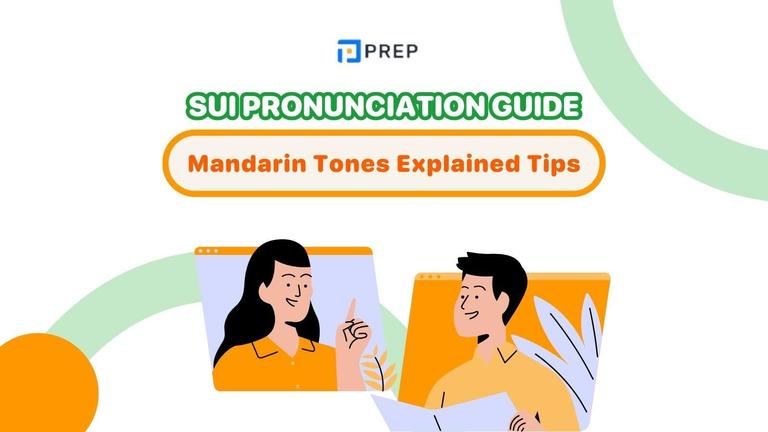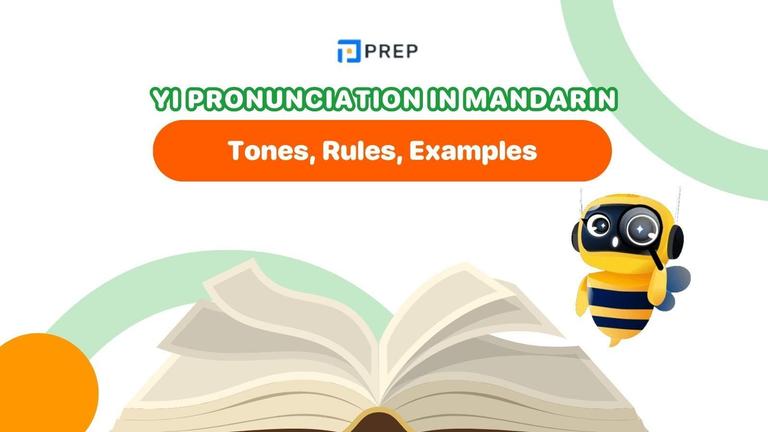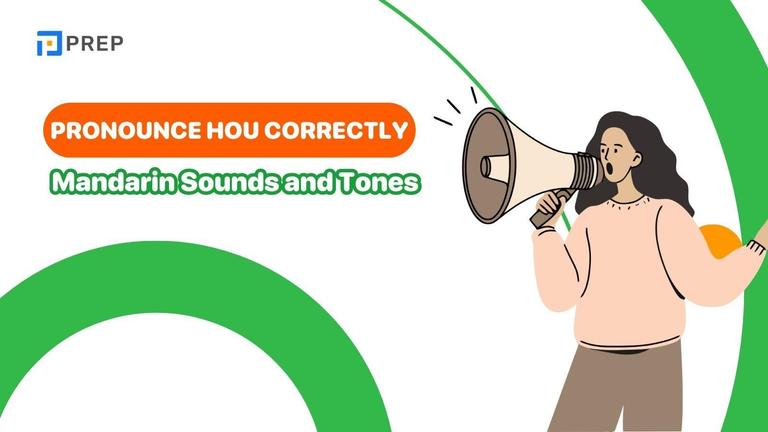Chinese Sentence Structure: Rules, Patterns and Examples
Understanding Chinese sentence structure is essential for building fluency. This guide explains the core SVO order, grammar rules for affirmatives, negatives, and questions, plus advanced patterns like 把 and 被. You’ll also find HSK-level examples and exercises to practice effectively.
I. What Is Chinese Sentence Structure?
Chinese sentence structure refers to the standard way words are arranged to form grammatically correct sentences in Mandarin. While Chinese and English share some structural similarities, particularly the Subject–Verb–Object (SVO) pattern, the two languages differ significantly in how meaning is constructed and conveyed.
In Chinese, the most common word order follows the pattern:
Subject + Verb + Object
This core structure is shared with English and serves as the foundation upon which more complex sentences are built.
Unlike English, Chinese does not use verb conjugations, plural forms, or tense indicators through inflection. That means:
-
Word function is determined by position within the sentence.
-
The same word cannot shift positions without changing or breaking the meaning.
-
There is no subject–verb agreement or tense marker; instead, words like 了 (aspect marker) or time expressions indicate when an action occurs.
For example:
-
他今天去学校
He goes to school today
Changing the order to “今天他学校去” creates a sentence that is grammatically incorrect or confusing, even if it contains the same vocabulary.
Mastering this foundation helps learners build more accurate and natural sentences. Understanding what Chinese sentence structure is—and how it works—is the first step toward fluency in reading, writing, and conversation. The next step is to break down the essential sentence components and learn how they are positioned.
1. Core Sentence Components and Their Positions
To form a complete and grammatically correct sentence in Mandarin, it is essential to understand how each sentence component fits within Chinese word order. While the basic structure follows a Subject–Verb–Object (SVO) pattern, Chinese also includes fixed positions for time, location, adverbs, and certain particles that add grammatical or emotional meaning.
Subject, Verb, and Object Structure
|
Component |
Chinese Example |
Pinyin |
English Meaning |
|
Subject |
我 |
wǒ |
I |
|
Verb |
喜欢 |
xǐhuan |
like |
|
Object |
中文 |
zhōngwén |
Chinese (language) |
|
Full Sentence |
我喜欢中文 |
Wǒ xǐhuan zhōngwén |
I like Chinese. |
Sentence Structure: Subject → Verb → Object (SVO)
Time and Location Phrases Position
|
Order |
Chinese Phrase |
Pinyin |
English Meaning |
|
Time |
昨天 |
zuótiān |
yesterday |
|
Location |
在学校 |
zài xuéxiào |
at school |
|
Verb Phrase |
看书 |
kàn shū |
read books |
|
Full Sentence |
他昨天在学校看书 |
Tā zuótiān zài xuéxiào kàn shū |
He read at school yesterday. |
Common Structure: Subject → Time → Location → Verb → Object
Adverbs and Aspect Particles Position
|
Type |
Chinese Word |
Pinyin |
Usage / Meaning |
|
Adverb |
常常 |
chángcháng |
often |
|
已经 |
yǐjīng |
already |
|
|
也 |
yě |
also |
|
|
不 |
bù |
not |
|
|
Aspect Particle |
了 |
le |
indicates completed action |
|
着 |
zhe |
indicates ongoing action |
|
|
过 |
guò |
indicates past experience |
|
|
Example Sentence |
我已经吃了午饭 |
Wǒ yǐjīng chī le wǔfàn |
I have already eaten lunch. |
Adverbs typically appear before the verb; aspect particles appear after the verb to indicate grammatical aspect.
2. Grammar Rules in Chinese Sentence Structure
Chinese grammar relies heavily on word order, functional words, and a limited set of grammatical markers to convey different sentence types. Unlike many Indo-European languages, Chinese does not use verb conjugations or inflected forms, which makes sentence construction more dependent on a few consistent patterns.
Below are some key grammar rules that form the foundation of Chinese sentence structure.
Affirmative and Negative Sentences
|
Type |
Chinese |
Pinyin |
English Meaning |
|
Affirmative |
他是老师 |
Tā shì lǎoshī |
He is a teacher |
|
Negative |
他不是老师 |
Tā bù shì lǎoshī |
He is not a teacher |
|
Negative |
我没有钱 |
Wǒ méi yǒu qián |
I don’t have money |
Note:
- Use 不 (bù) for general and habitual negation.
- Use 没 (méi) for past actions or "not having."
Yes/No and WH-Question Formats
|
Question Type |
Chinese Sentence |
Pinyin |
Meaning |
|
Yes/No (with 吗) |
你是学生吗? |
Nǐ shì xuéshēng ma? |
Are you a student? |
|
Yes/No (A-not-A) |
你是不是学生? |
Nǐ shì bù shì xuéshēng? |
Are you (or not) a student? |
|
Choice Question |
你想喝茶还是咖啡? |
Nǐ xiǎng hē chá háishì kāfēi? |
Do you want tea or coffee? |
|
WH – Who |
他是谁? |
Tā shì shéi? |
Who is he? |
|
WH – Where |
你去哪里? |
Nǐ qù nǎlǐ? |
Where are you going? |
|
WH – Why |
你为什么学中文? |
Nǐ wèishénme xué Zhōngwén? |
Why are you learning Chinese? |
Note:
- Word order in WH-questions usually stays the same.
- No subject-verb inversion is required.
Essential Sentence Patterns for Beginners
|
Structure |
Pattern |
Example (Chinese) |
Pinyin |
English Meaning |
|
A is B |
A 是 B |
他是医生 |
Tā shì yīshēng |
He is a doctor |
|
A has B |
A 有 B |
我有一本书 |
Wǒ yǒu yì běn shū |
I have a book |
|
A is at B |
A 在 B |
她在学校 |
Tā zài xuéxiào |
She is at school |
These sentence types form the backbone of everyday Chinese and are easy to adapt for speaking, writing, and comprehension.
Understanding and applying these basic grammar rules will make sentence-building feel more intuitive, even without complicated conjugations or tenses. As you internalize these structures, they’ll form the core of your functional Chinese in any context.
3. Advanced Chinese Sentence Structures
Once you are confident with basic sentence patterns in Chinese, the next step is to expand your knowledge with more complex sentence structures that appear frequently in writing, formal communication, and intermediate-to-advanced proficiency tests like HSK 3 to 5. Among these, the “把” structure, passive sentences with “被”, and compound sentences are essential building blocks for expressing actions, emphasis, and logical relationships in greater detail.
|
Structure Type |
Sentence Pattern |
Example (Chinese) |
English Meaning |
Usage Notes |
|
"把" Construction |
Subject + 把 + Object + Verb + Result/Location |
我把书放在桌子上了。 |
I put the book on the table. |
Highlights action result; object appears before the verb. |
|
Passive with "被" |
Subject + 被 + Agent + Verb (+ complement) |
他被老师批评了。 |
He was criticized by the teacher. |
Often used in formal/written Chinese; agent can be omitted. |
|
Conditional Sentence |
如果… 就… |
如果你努力学习,就能通过考试。 |
If you study hard, you’ll pass the test. |
Alternatives include 要是… 就…, 只要… 就… |
|
Concessive Sentence |
虽然… 但是… |
虽然下雨了,但是我们还是去公园了。 |
Although it rained, we still went to the park. |
Used to express contrast; both clauses required. |
|
Comparison: 比 |
A 比 B + adjective |
这个房间比那个大。 |
This room is bigger than that one. |
Used to compare two things using adjectives. |
|
Comparison: 像 |
A 像 B 一样 + adjective/verb |
他像他哥哥一样聪明。 |
He is smart like his brother. |
Indicates similarity. Can include modifiers like 一点 or 一样. |
These patterns allow you to express abstract thinking, contrast, hypothesis, reasoning, and relationships — essential in conversations, essays, and formal texts.
II. Exercises on sentence structure in Chinese
Practice is key to mastering Chinese sentence structure. Below are four types of exercises to help you internalize common patterns, reinforce word order, and improve grammatical accuracy.
Exercise 1: Reorder the Words to Make a Correct Sentence
Put the words in the correct order to form a natural Mandarin sentence. Pay attention to time expressions and verb placement.
- 学校 / 今天 / 他 / 去了
- 中文 / 我 / 很 / 喜欢
- 你 / 是 / 哪国人
- 妈妈 / 做饭 / 在 / 厨房 / 正在
Exercise 2: Fill in the Blank
Choose the correct word to complete each sentence. Focus on particles like 吗, 不, 没, or sentence-ending particles.
- 你是老师 ___?
- 我 ___ 有手机。
- 她今天不来上课,___她生病了。
- 我们商店 ___ 开门了。
Exercise 3: Make a Sentence Using the Given Pattern
Use the indicated pattern to create a sentence based on the vocabulary provided.
Pattern 1: A 是 B
- 她 / 医生
Pattern 2: A 有 B - 我 / 三 / 兄弟
Pattern 3: A 在 B - 他们 / 餐厅
Pattern 4: A + 很 + Adj - 这个地方 / 安静
Exercise 4: Translate Into Chinese
Translate each English sentence into a complete Chinese sentence using correct word order.
- I am not a student.
- Where is the bathroom?
- She reads books at home in the evening.
- Are you busy tomorrow?
Answer Key
[prep_collapse_expand open_text="View more" close_text="Show less"]
|
Exercise 1 |
Exercise 2 |
Exercise 3 |
Exercise 4 |
|
|
|
|
[/prep_collapse_expand]
Mastering Chinese sentence structure is one of the most important steps to becoming fluent in Mandarin. Practice consistently, focus on patterns, and build from simple to complex sentences. The more you use what you’ve learned, the more confident and accurate you’ll become.
For more grammar guides, examples, and printable practice sheets, follow PREP and continue growing your Mandarin skills with structure and clarity.

Hi I'm Chloe, and I am currently serving as an Product Content Administrator at Prep Education. With over five years of experience in independent online IELTS study and exam preparation, I am confident in my ability to support learners in achieving their highest possible scores.
Comment
Premium content
View allPersonalized roadmap
Most read












